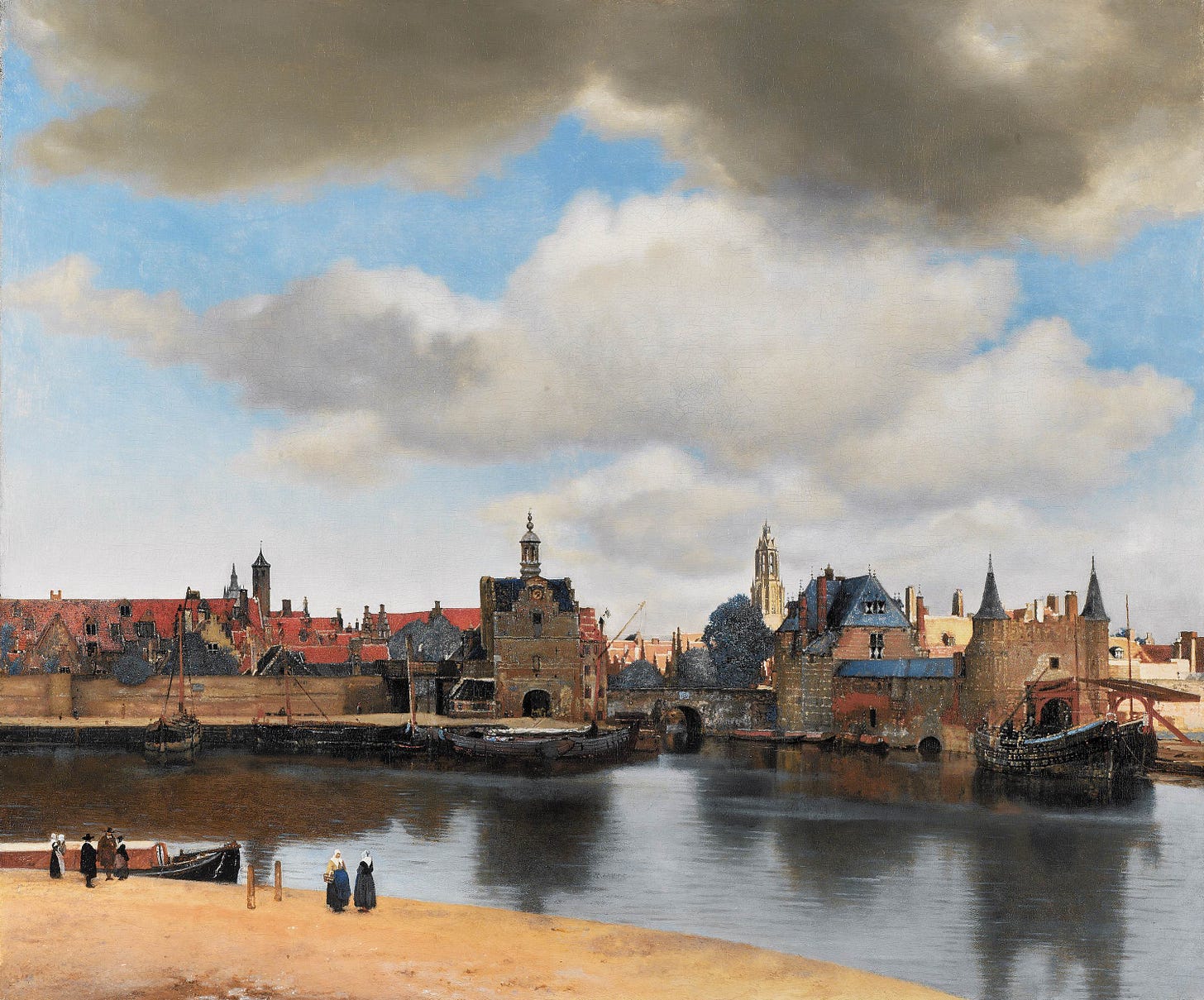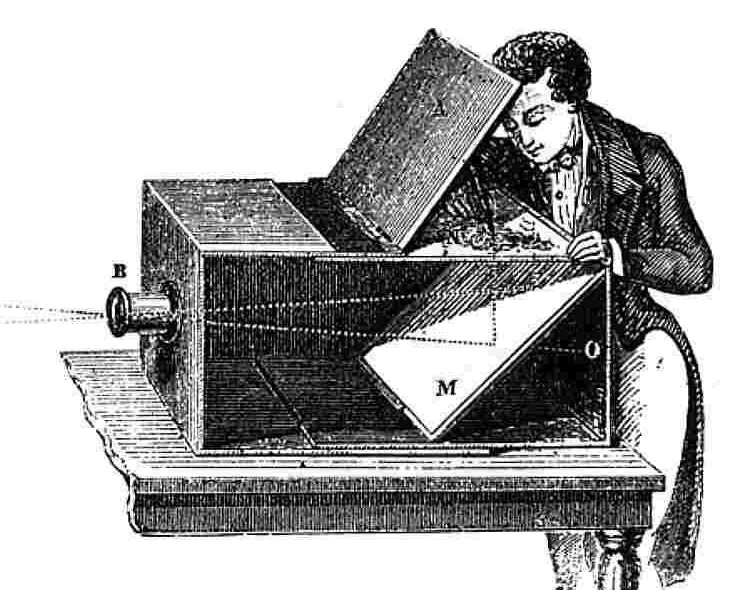Picture a dark room with a tiny hole on one side. Light sneaks through this "aperture," acting like a lens and flipping the outside world upside down while reversing it left to right on the opposite wall. It’s like having a live TV feed with no remote—just a bit more atmospheric. Processing rays of light much like the human eye, camera obscura was essentially the ancient precursor to the modern camera and was a daily lifesaver for artists trying to capture city scenes. Used by artists like Vermeer, this nifty tool helped them nail accurate proportions and angles, turning their paintings into realistic scenes.

By Vermeer’s time, the camera obscura was already equipped with a lens in the opening to control the size of the aperture. Later, the device shrank into a much smaller box with a mirror to reflect the right-side-up image onto a horizontal surface—like a tracing paper, for instance. These innovations laid the groundwork for photography, kicking off the journey to capturing moments with the click of a button.
The camera obscura proves that even in the dark, art always finds a way to shine. And let’s be honest—without it, we might never have gotten selfies. Imagine explaining that to Vermeer!
Art needs more eyes — and so does this blog.
It’s free to read, but only grows if it travels.
Liked it even a bit? Tap the heart.
A line stuck with you? Drop it in a comment.
Smiled once? Hit restack.
Want to keep this writing alive? Send it to a curious friend to subscribe.




